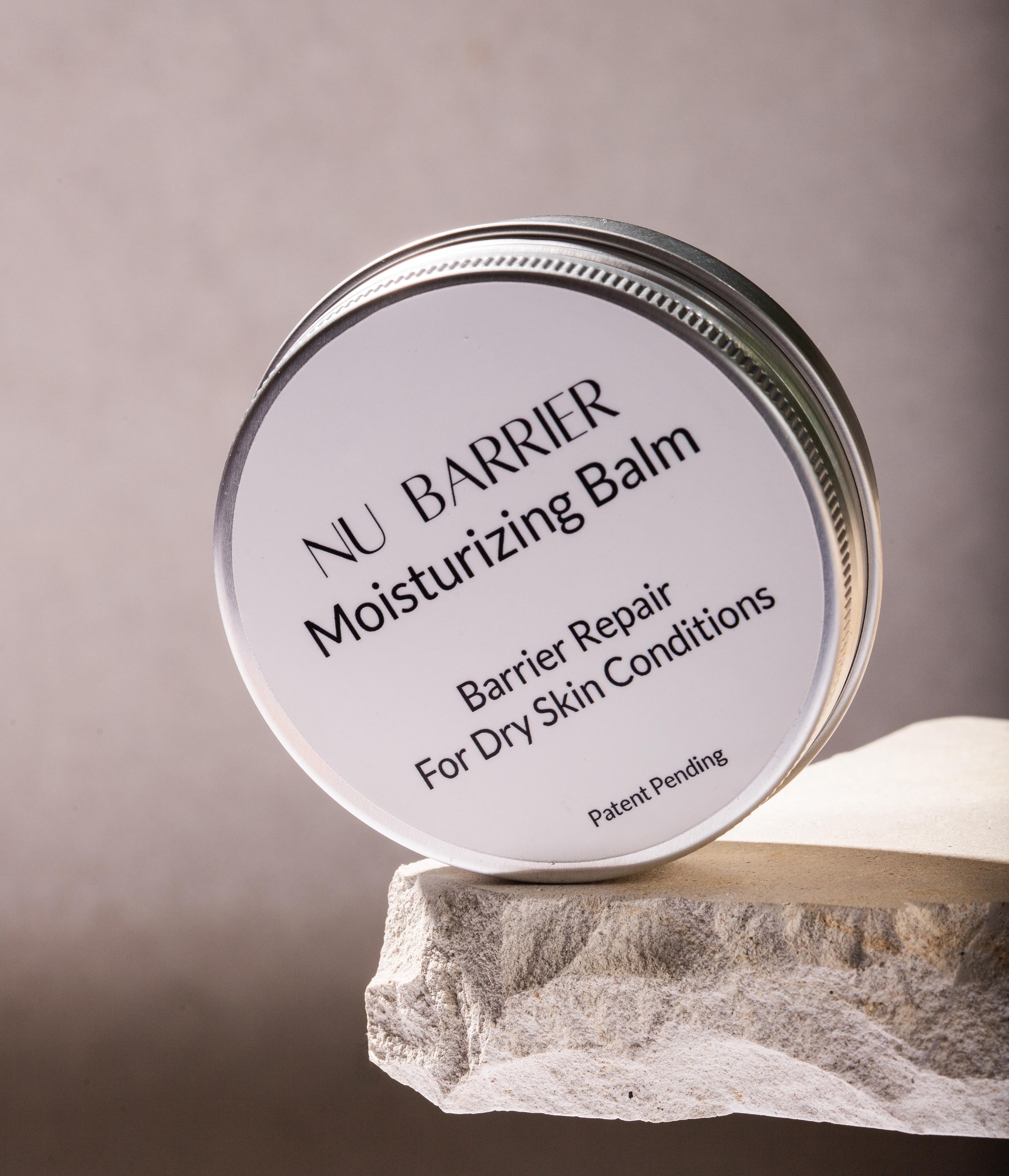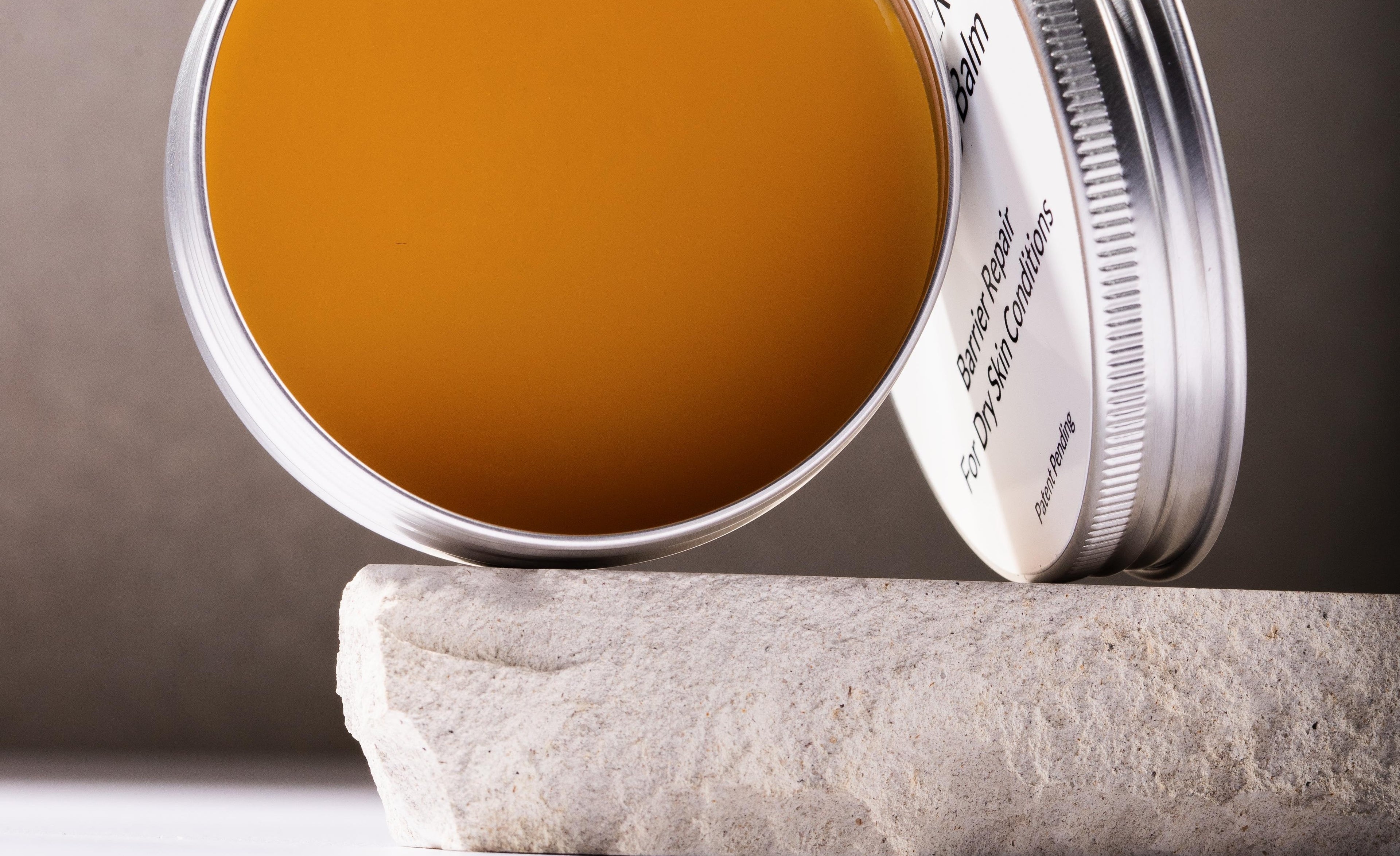The Hidden Cycle Behind Your Ongoing Skin Irritation
The skin barrier plays an important role in keeping your skin healthy. It protects against outside irritants and helps retain moisture and balance. In eczema (also called atopic dermatitis) and other barrier disorders, like rosacea and contact dermatitis, this protective layer becomes weakened or damaged (Schmuth et al., 2024; Luger et al., 2021; Proksch et al., 2006).
How the Skin Barrier Gets Disrupted
Your skin barrier can become damaged in two main ways: your skin's physical structure breaks down, and the natural chemistry is thrown off.
1) The outer layer of your skin and the tight seals between your skin cells normally act as a physical shield. When this shield is weakened, irritation can get worse (Nguyen et al., 2020; Luger et al., 2021).
2) Your skin’s chemistry gets thrown off when its pH changes and it loses important fats that keep the barrier strong. Studies show that acidifying treatments help bring your skin’s pH back to normal, support healthy skin bacteria, strengthen your skin barrier, and calm inflammation (Proksch, 2018).
How Inflammation Affects Your Skin Barrier
When your skin barrier is damaged, inflammation can become ongoing and harder to control; environmental triggers, like irritants and allergens, can penetrate your skin more easily, causing more inflammation. As inflammation continues, it further weakens your barrier (Egawa & Kabashima, 2016), making your skin more sensitive and reactive (Proksch et al., 2006). This sets off a vicious cycle—damage to your barrier leads to inflammation, and inflammation causes more damage to your skin barrier (Bäsler & Brandner, 2016; Yokouchi et al., 2015). The longer this cycle continues, the worse the condition of your skin becomes, and the harder it becomes to calm skin irritation and restore your skin barrier. That's why treating inflammation early can be one of your biggest advantages in preventing long-term barrier dysfunction.
Why Barrier Repair Matters
Managing irritation effectively means going beyond just calming inflammation. You need to restore the skin barrier itself. Topical treatments—like emollients and lipid-rich creams—can help you rebuild the barrier and reduce flare-ups (Proksch et al., 2006; Proksch & Brasch, 2020). As Proksch & Brasch (2020) explain, “treatment strategies should aim to restore the skin barrier to cure and prevent the relapse of the disease.”
Take Matters into Your Own Hands
Damage to your barrier isn’t caused by just one thing—it’s the result of genetics, environmental triggers, and immune system imbalances working together. Over time, this damage to your skin barrier leads to chronic inflammation.
While corticosteroids can reduce inflammation, they won't restore your skin barrier (Proksch & Brasch, 2020). That’s why lasting relief depends on more than just soothing symptoms—it requires rebuilding and maintaining your skin barrier (Proksch & Brasch, 2020).
Focus on restoring your skin barrier early—because it’s the one place most products overlook, but the one place where you can have all the control. For more information, please see: Restoring the Skin Barrier Through Research-driven Skincare – Barrier Skincare
References
Bäsler, K., & Brandner, J. (2016). Tight junctions in skin inflammation. Pflügers Archiv - European Journal of Physiology, 469, 3 - 14. https://doi.org/10.1007/s00424-016-1903-9
Nguyen, H., Trujillo-Paez, J., Umehara, Y., Yue, H., Peng, G., Kiatsurayanon, C., Chieosilapatham, P., Song, P., Okumura, K., Ogawa, H., Ikeda, S., & Niyonsaba, F. (2020). Role of Antimicrobial Peptides in Skin Barrier Repair in Individuals with Atopic Dermatitis. International Journal of Molecular Sciences, 21. https://doi.org/10.3390/ijms21207607
Schmuth, M., Eckmann, S., Moosbrugger-Martinz, V., Ortner-Tobider, D., Blunder, S., Trafoier, T., Gruber, R., & Elias, P. (2024). Skin Barrier in Atopic Dermatitis.. The Journal of investigative dermatology, 144 5, 989-1000.e1. https://doi.org/10.1016/j.jid.2024.03.006
Luger, T., Amagai, M., Dréno, B., Dagnelie, M., Liao, W., Kabashima, K., Schikowski, T., Proksch, E., Elias, P., Simon, M., Simpson, E., Grinich, E., & Schmuth, M. (2021). Atopic dermatitis: Role of the skin barrier, environment, microbiome, and therapeutic agents.. Journal of dermatological science. https://doi.org/10.1016/j.jdermsci.2021.04.007
Proksch, E., Fölster-Holst, R., & Jensen, J. (2006). Skin barrier function, epidermal proliferation and differentiation in eczema.. Journal of dermatological science, 43 3, 159-69. https://doi.org/10.1016/J.JDERMSCI.2006.06.003
Proksch, E. (2018). pH in nature, humans and skin. The Journal of Dermatology, 45. https://doi.org/10.1111/1346-8138.14489.
Egawa, G., & Kabashima, K. (2016). Multifactorial skin barrier deficiency and atopic dermatitis: Essential topics to prevent the atopic march.. The Journal of allergy and clinical immunology, 138 2, 350-358.e1. https://doi.org/10.1016/j.jaci.2016.06.002
Proksch, E., & Brasch, J. (2020). Role of the Permeability Barrier in Contact Dermatitis. Contact Dermatitis. https://doi.org/10.1007/978-3-642-03827-3_6
Yokouchi, M., Kubo, A., Kawasaki, H., Yoshida, K., Ishii, K., Furuse, M., & Amagai, M. (2015). Epidermal tight junction barrier function is altered by skin inflammation, but not by filaggrin-deficient stratum corneum.. Journal of dermatological science, 77 1, 28-36. https://doi.org/10.1016/j.jdermsci.2014.11.007


